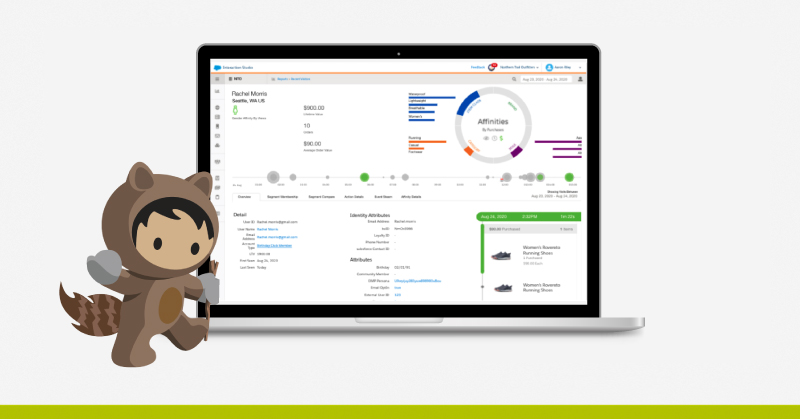It is undeniable that in the digital world, every interaction counts. The success of a campaign can depend on the ability to reach customers at the right moment. Salesforce Marketing Cloud has incorporated an innovative and revolutionary tool called Einstein Send Time Optimization (STO), which uses artificial intelligence to optimize the timing of emails in our marketing strategies.
This article will teach us in detail what STO consists of, the importance of timing in Salesforce Marketing Cloud, how the tool works, and the advantages of implementing it in our strategy planning.
Definition of STO in SFMC
As defined earlier, the abbreviation STO, Einstein Send Time Optimization, is nothing more, nothing less than a unique and distinctive feature of Salesforce Marketing Cloud.

It is a tool that uses artificial intelligence (AI) to determine the optimal time to send emails to each email address or individual, optimizing and personalizing the send based on the individual’s history, behavior, or preferences.
Why Send Times are Important in SFMC
In a time when we receive an immense amount of emails in our inbox, receiving a message at the right time can be crucial and can significantly impact the open and click-through rates.
This action could improve the effectiveness of our marketing campaigns and strengthen the bonds with our customers.
STO - Einstein Send Time Optimization
It is an advanced tool within the SFMC universe focused on send optimization. STO, unlike traditional methods that set a fixed schedule, uses artificial intelligence algorithms to personalize the send for each contact.
Incorporation of Artificial Intelligence
The essence of STO lies in the integration of artificial intelligence, specifically Einstein, Salesforce’s AI engine. This fusion allows for a deep analysis of historical data and behavioral patterns, generating accurate predictions about the most opportune moment for interaction.
Operation of STO in SFMC
Examining the Interaction Log
Einstein Send Time Optimization carefully analyzes the interaction history of each individual by examining clicks, opening patterns, and other behaviors to understand past activity perfectly and predict the best future moment.
Predicting the Perfect Sending Time
Based on all this and using predictive algorithms, it determines the best time to send the message to each individual. STO goes beyond simple scheduling and dynamically adjusts to the recipient’s habits at each moment.

Advantages of Implementing Einstein STO in Your SFMC Strategy
Optimization and Maximization in Campaign Effectiveness
By implementing Einstein STO in our journey, our campaigns will experience significant and relevant optimization. Messages will be received at the most opportune moment, enhancing effectiveness and improving campaign results.
Increase in Participation and Open Rate
We typically measure the effectiveness of our campaigns through open and click-through rates, and this is where one of the most significant benefits of using STO can be observed. It is proven that such personalization results in increased attention from recipients.
Real-Time Personalization
As mentioned earlier, it is not just about simple scheduling; STO allows instant adaptation to real-time changes in user behavior, creating a tool that provides more relevant and timely messages.
Points to Consider and Best Practices
Ensuring Accuracy and Relevance of Information
An essential part is ensuring the quality of the data used by STO. The tool’s predictions depend directly on the accuracy and study of historical information.
Continuous Monitoring and Evaluation
Successful implementation involves constant monitoring and continuous evaluation of results. Adjusting strategies as needed ensures effective adaptability to changes in customer behavior.

Integration with Other Marketing Strategies
A good marketing strategy is one that blends different marketing tools. It is a best practice to integrate STO with other marketing instruments to strengthen the overall strategy.
Final Conclusion
Review of Einstein STO Advantages
In conclusion, reviewing the advantages offered by Einstein STO highlights the transformation it can bring to strategies in Salesforce Marketing Cloud. Time optimization is currently a key and differentiating factor for success in our campaigns.
The Future of STO Optimization
As an additional note and looking towards tomorrow, we will continue to explore the future of send time optimization in digital marketing. With the current perspectives for the future and the innovations being hinted at, the effectiveness of marketing strategies will undoubtedly continue to be refined.
STO is not just a current solution; it is a vision of the future of personalized and efficient marketing.












































